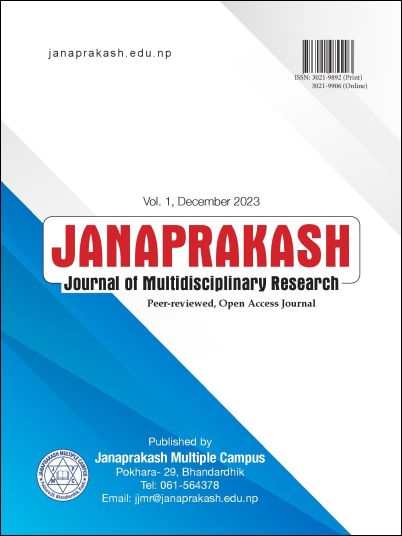Cooperative Investment in Gandaki Province
DOI:
https://doi.org/10.3126/jjmr.v1i1.69935Keywords:
Economic development, investment, loan, prosperity, sustainable developmentAbstract
Cooperatives can truly transform the economy of a country to a level of prosperity. In this regard, this study aimed to explore the possible overall aspects of cooperatives in the Gandaki Province. It is based on the data provided by the Cooperative Registrar Office, Kaski, and the data published by the Department of Cooperative (2022). The present study used integrated research designs for overall discussion. The investment deficiency syndrome of the nation as well as the province could be healed through the better management of the cooperative’s fund and can achieve the goal of “Prosperous Nepal; Happy Nepali”, the slogan of the fifteenth plan. This study found that the cooperative movement is well practiced in the Gandaki province but the regulation and control of the cooperatives sector is very weak. If the proper database is maintained and thoroughly monitored, the aim of the cooperative movement can be achieved in a shorter period. It would wipe out the major unemployment problem of the country boost the national economy, and correct the unfavorable Balance of Trade. This study recommends the investment of cooperative funds in the productive sector rather than in the unproductive one. Moreover, cooperatives must be concerned to uplift the status of marginalized, deprived, women and weak sections of the society which assures the sustainable development of the society and the nation. Additionally, cooperatives must support and attract young people to the agricultural and cottage sector, and Small and Medium Enterprises.
Downloads
Downloads
Published
How to Cite
Issue
Section
License
Copyright (c) 2023 The Author(s)

This work is licensed under a Creative Commons Attribution-NonCommercial 4.0 International License.
This license enables reusers to distribute, remix, adapt, and build upon the material in any medium or format, so long as attribution is given to the creator. The license allows for commercial use.




